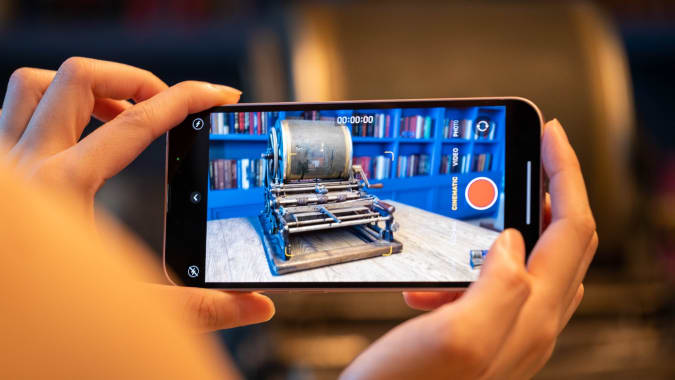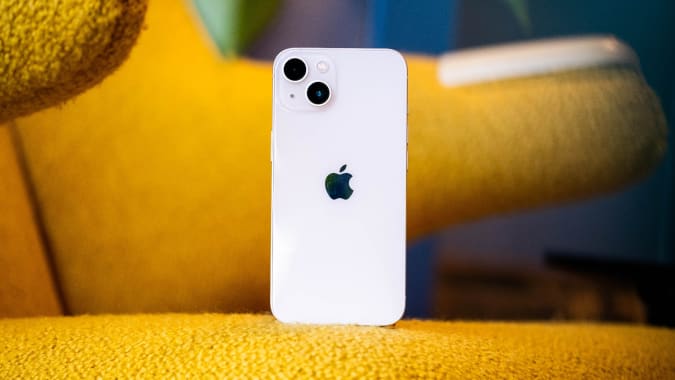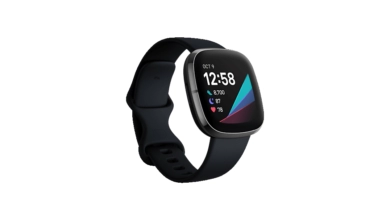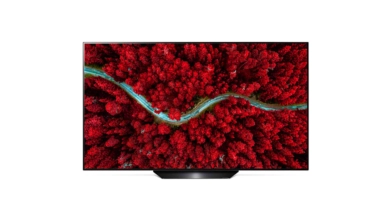Apple iPhone 13 mini
Do you want the new Cinematic Mode more than anything?
The iPhone 13 and 13 mini aren’t very exciting when you look at them in a paper. If you’ve been following the Android market, you’ll recognize some of the subtle improvements made by Apple in the iPhone 12 models. Like the iPhone 12 Pro Max’s excellent camera hardware, which is now available on smaller, more affordable phones, some of the changes are impressive. Other improvements, such as a smaller notch, larger batteries, brighter displays, faster processors, and more extensive 5G support, are more subtle. For those looking to upgrade from older models, the iPhone 13 mini and the full-size iPhone 13 feel like worthwhile upgrades.

Design
It’s possible that you won’t notice much of a difference between the iPhones of this year and your previous iPhone 12 or 12 mini. A smaller notch, a rearranged camera module that sticks out a little further, and a new pink color option are all part of the phone’s physical improvements. “Not Pink” on the Pixel 3 is similar to this color, but because the glass on the iPhone makes it appear paler and iridescent, it’s my favorite.
The front camera notch was reduced by 20% on the iPhone, which is great, but it’s still much larger than the Android punch-hole designs. Daily use didn’t benefit much from the smaller size, either. Of course, Face ID hardware is housed in that notch, making it more advanced than any punch-hole camera currently available. A more robust face-recognition system is necessary because current iPhones lack a fingerprint sensor. Until Apple comes up with a better solution, we’ll have to put up with the notch.

The camera module on the iPhone 13 and the iPhone 12 can be used to tell them apart. Apple arranged the lenses diagonally rather than vertically to save space. To make matters worse, the additional wobbling caused by the larger and thicker bump is a minor irritation. This also means that your old iPhone 12 cases won’t fit anymore, as well.
If you look at them side by side, the new iPhones look almost identical to last year’s models. There is a “ceramic shield” that covers the front of both devices, which are made of anodized aluminum and glass with flat edges.
The 6.1-inch and 5.4-inch screens on the iPhone 13 and 13 mini are the same size as before, but the devices are slightly heavier and thicker. Despite its smaller screen, the iPhone 13 weighs more than the Galaxy S21. In spite of this, the high density and shiny metal edges give it a more luxurious appearance.
Audio and visual display
Like the iPhone 13 Pros, the iPhone 13 and 13 mini have displays that are no faster than their predecessors. Apple claims that the new displays have a 28 percent increase in brightness. On a cloudy day, I noticed the iPhone 13 had just a smidgen of an advantage when I turned the brightness to maximum on both phones. However, the disparity between them isn’t significant enough to make a distinction without comparing them side by side.
In addition, there haven’t been many changes to the screens of the iPhone 13. The fact is, however, that phone displays are faster almost everywhere else you look. In my testing of the iPhone 13, I found that even with Google’s 90Hz panels, Twitter and Reddit scrolling was noticeably smoother than on the Pixel 5 and iPhone 12.

With the iPhone 13’s display, you won’t miss much if you’ve only used a 60Hz screen so far; it’s vibrant and crisp. Watching videos on Instagram or TikTok will be a lot of fun for you. However, speaking from personal experience, I can assure you that you’re missing out on a lot.
There are no significant changes in the iPhone 13 speakers’ performance; you should be able to hear voices in YouTube videos and background music just fine. This service is capable of streaming your favorite songs with clear vocals and a decent amount of bass in the event of an emergency. It’s no surprise, then, that the larger iPhone is more powerful and has a richer sound than the smaller model.
Cameras
The majority of the improvements in the iPhone 13 and 13 mini revolve around the camera and video capabilities. Both the rear sensors and the ultrawide lens on this iPhone have been upgraded by Apple, and they are both supposed to let in more light than before. Unfortunately, the A15 chipset is required for many of the new features, so older iPhones won’t be able to take advantage of the Cinematic Mode.
Because of the chip’s faster Image Signal Processor (ISP), taking nighttime photos will be faster. When I shot a candlelit globe in a pitch-black room with the iPhone 12 and 13, I found that I didn’t need to hold still for nearly as long as I did with the iPhone 12. The difference was probably one second, which may not seem like much, but when you’re trying to keep still, it can feel like an eternity.
However, despite the darker photos taken with the new phone, the overall exposure was better in the ultrawide shots I took with it. Cleaner lines, less noise, and a more neutral tone were found in the night sky images from the iPhone 12 than in those from the iPhone 12. However, I found that Google’s Night Sight on the Pixel 5 produced images with more detail in the shadows and I preferred the images’ cooler tones.
Pixels used to be my go-to camera because Apple’s had a yellowish cast to them. However, with the iPhone 13s, Apple is introducing a feature called Photographic Styles that will better match users’ individual tastes and preferences. You can choose between five different profiles, each with a different level of contrast and color temperature: Standard, Rich Contrast, Vibrant, Warm, and Cool.
These modes can also be customized to suit your needs. However, in their original configurations, Vibrant was my preferred Style. If you’ve never used Apple’s default treatment, this is a nice alternative for those who don’t like fiddling with filters. When compared to Google’s photos, the iPhone 13’s were brighter and clearly had HDR effects, but the colors and sharpness were just as good overall on the iPhone 13.

Along with the previously mentioned enhancements to hardware and software, the company has also made changes to its HDR algorithm to better accommodate the needs of every individual in the frame. For video quality, it improved dynamic range and highlighted details. Dolby Vision recording in 4K resolution at 60 frames per second is now possible.
Cinematic Mode, however, is the most intriguing new video feature (and arguably the most significant camera update). You can use the A15 chip’s neural engine to create a Portrait mode-like effect in your videos, keeping your selected subjects in focus while blurring out the rest of your scene. You can manually adjust the focus by swiping your finger across the viewfinder, or you can let the iPhone do the work for you by looking at the people and objects in the scene.
Apple’s system stands on its own two feet and is quite clever in and of itself. I was impressed with the iPhone 13’s ability to recognize faces in my photos, both human and canine, and the appearance of yellow or white boxes indicated possible subjects to focus on. I noticed a distinct difference in clarity and blurriness as my subjects walked toward or away from the camera. I had a hard time adjusting the focus when I tried to exert more control over the system. Even after tapping on the rectangle of the object I was trying to focus on, it would sometimes remain hazy. If I selected someone and they walked behind an obstruction, the iPhone didn’t follow them. That was the only other time this happened.
In the rare case that it worked as expected, Cinematic Mode added a polished quality to videos. Because of this, it appeared artificial or out of place at the default brightness setting. f/16 helped to soften the harsh outline of my colleague’s head against the muted background, but it was still too pronounced.
Even if you’ve set your camera to record at a higher quality, Cinematic Mode only works in 1080p at 30 frames per second.
The 12-megapixel front-facing camera also has a Cinematic mode, and both features were just as effective when used in conjunction with the rear-facing camera.
Selfies on the iPhone 13 were a bit soft in low light compared to those on the Pixel 5 and Galaxy S21, but in bright conditions, the iPhone’s camera was just as sharp as the competition. The white balance was more accurate, and the overall color balance was more neutral than the other two (though Samsung was pretty close).
iOS 15
I tested the beta of iOS 15 and covered most of the new features, including Focus modes and SharePlay. One of the most useful new features on any smartphone platform in recent years is focus modes, which let you set custom home pages and notification profiles based on your location or time of day. The SharePlay component of the game won’t arrive until a later date.
Open Photos or Tips and you’ll see what’s new — like Memories set to music from Apple’s Music library — every time. Additionally, Safari was overhauled (and tweaked during the beta period), making it easier to navigate and organize your tabs.
Although I’ve never been a big fan of Safari, it’s nice to see Apple update its interface to make one-handed navigation easier. On iOS, Chrome and Safari are very similar, with the exception of Google’s address and search bar at the very top of the screen, which is a shame. In Safari, you can also switch back to the old-fashioned layout.
Live Text in Photos, for example, makes it much easier to search for specific images from the Spotlight search results on iOS devices. Shared With You in Messaging makes it easier to find things you and your friends talked about when you’re looking for them, as well as a new Maps app. Although iOS 15 features are expected to be available on older iPhones, they won’t change your decision on whether or not to upgrade this year.
A more in-depth look at Apple’s latest operating system is coming soon, but for now, I’m pleased with iOS 15’s control and eagerly await a stable version of SharePlay.
Performance and in use
Annual updates, such as incremental improvements in processor speed and battery life, are now taken for granted. Apple says one of the iPhone 13’s key updates is an internal redesign that allows for a larger battery, among other things, even though it’s not obvious. Other features that have been added to the A15 include a GPU, ISP, and a video encoder and decoder. Apple also increased the storage capacity of the entry-level iPhone 13 to 128GB, which is worth noting. Finally.

On the iPhone 13 and 13 mini, I spent the majority of my time taking pictures and videos, browsing my feeds, shopping for completely unnecessary things, messaging my friends, and completing the New York Times Crossword app round after round. Occasionally, the mini would lag while the larger phone was never a problem. If my internet connection was to blame, I don’t know if the smaller device was actually slower. Their Geekbench 5 results are nearly identical, so I’m inclined to believe the former. When it came to tasks like launching multiple apps, snapping photos quickly, and uploading Instagram posts on the iPhone 13s, both devices performed well.
For the most part, the display is holding both models back. The 90Hz panel on the Pixel 5 is noticeably faster than the screens on most other high-end smartphones. The new iPhones felt like a drag whenever I started scrolling through my Instagram Story viewers or Twitter feed or pretty much anything else on the internet. When I knew I’d be scrolling for an extended period of time, I’d reach for my Pixel 5 or iPhone 13 Pro.
Battery life
Apple claims that the iPhone 13 and 13 mini will have a longer battery life than their predecessors, despite having brighter screens. The 13 mini’s 13 hours and 19 minutes on our video rundown test is still less than the average smartphone, despite the fact that it beat the 12 mini in terms of battery life. It’s a shame, because the iPhone 13 mini’s smaller size makes it much more convenient to hold in one hand. A modern phone’s greatest shortcoming is its inability to hold a charge for an extended period of time.
When it came to battery life, the iPhone 13 outlasted its predecessor by nearly two days. The Pixel 5 and Galaxy S21 both had similar runtimes, which is great because most high-end smartphones these days come equipped with batteries that last for quite some time. In the meantime, I’m continuing to run battery tests on all of the new iPhones, including the 13 and 13 Plus, and will provide updated comparisons in the near future.
Wrap Up
As we’ve said before and will say again, the iPhones this year aren’t huge leaps forward in technology, but if you’re still using an iPhone 11 or earlier, the incremental improvements they bring may be enough to entice you to upgrade. With a design that is largely unchanged from previous models and only minor improvements, the iPhone 13 and 13 mini could have been called the 12s and 12s mini. If you already own an iPhone 12, you’ll have to weigh the additional cost of a new phone against the benefits of improved battery life and photography. We’ll have a full review of the 13 Pro and Pro Max later this week, so stay tuned to see if the faster displays and macro photography capabilities are worth it.
On the hardware front, you’ll find that Apple’s newest and the most recent Android flagships are virtually identical. Those who prefer fingerprint sensors to Face ID can only find them on non-Apple phones, which have faster screens. Android has a lot going for it, so it’s worth sticking with. For those who want more control over how much time they give up to their phones, Apple’s iOS focus modes and privacy controls make it appealing. If you’re looking for a compelling reason to switch ecosystems, the iPhone 13 and 13 mini aren’t going to help you out. However, as expected, these are excellent phones with few flaws.
Apple iPhone 13 mini
Performance - 9.2
Display - 9.6
Cost - 8.3
9
9/10 Total Points
For an entry-level Apple phone with a high-end processor and cameras, the iPhone 13 mini is a great choice. Because of this, a single charge only lasts about a day.





